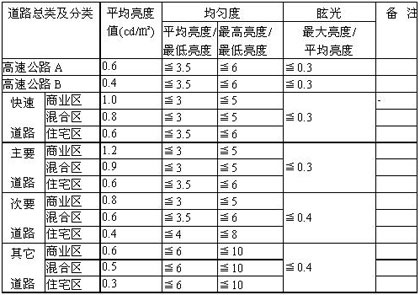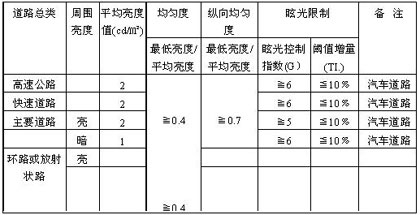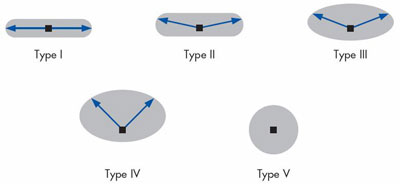In road lighting, the efficiency of light sources and electrical appliances is generally concerned in China, but the spatial light distribution requirements of lamps, the reflector design of lamps, and the scientific calculation of road lighting are not paid enough attention. Therefore, in the future road lighting, strengthening the requirements for spatial light distribution and scientifically selecting lighting fixtures are important ways to improve lighting quality, save energy, and ensure traffic safety.
First, the luminosity requirements of road lighting
As a quality evaluation indicator for road lighting, IES, CIE and China's national standards have clear luminosity requirements for road lighting, including the following:
1. Average brightness level of the road surface
The average brightness level of the road surface affects the driver's contrast sensitivity and thus the perceived reliability. In road lighting, the background of the driver's observation of the road surface obstacle is mainly the road surface in front of the driver. Therefore, there must be at least a certain minimum brightness difference (contrast) between the surface of the obstacle itself and the road surface to detect the obstacle. The required contrast value depends on the viewing angle and the brightness distribution in the observer's field of view, which determines the adaptive conditions of the observer's eye. The larger the angle of view (the larger the obstacle when the distance from the observer to the obstacle is constant), the higher the brightness of the road surface, the higher the contrast sensitivity of the eye, and the greater the chance of detecting the obstacle. Therefore, increasing the average brightness (or illuminance) value of the road surface will help improve the reliability of the driver's perception (obstacle). The average brightness level also directly affects the driver's visual comfort. The higher the average brightness (but below the level of brightness that produces glare), the more comfortable the driver is.
2, the brightness uniformity of the road surface
In order to make the road surface brightness uniform, road lighting facilities, even if they provide good average brightness for the road surface, may produce low brightness in some areas of the road surface, so the contrast value is low and the threshold value is high in these areas. At the same time, a large difference in brightness in the field of view can also cause a decrease in the contrast sensitivity of the eye and cause a so-called transient adaptation problem, so that obstacles in these dark areas are not easily perceived. Therefore, in order to have sufficient awareness of each point in each area of ​​the road surface, it is necessary to determine the allowable difference between the minimum brightness and the average brightness on the road surface, that is, the total brightness uniformity, which is defined as the minimum brightness and average on the road surface. The ratio of brightness. In the case of ensuring the total brightness uniformity, there may still be a partial bright, partially dark uncomfortable feeling on the road surface. Therefore, from the perspective of comfort, the brightness difference between the brightest and darkest areas along the centerline of the lane should be limited, that is, the longitudinal uniformity.
3, glare
Glare limitation is also an important indicator of evaluation in road lighting. Glare can be divided into two categories: 1 is called disability glare. It can impair the ability to observe objects and directly affect the reliability of the driver's perception of the object. 2 is called uncomfortable glare, which usually causes discomfort and fatigue, which directly affects the driver's comfort level.
4, visual induction
Visual inductivity cannot be expressed by photometric parameters, but it is also an important factor in the evaluation of road lighting quality. Lighting facilities should provide good inducibility, allowing the driver to immediately identify the direction of the road at a distance, and it is as important as traffic level and glare control for traffic safety and comfort, and it is with the driver. Both visual function and visual comfort are related.
The following two tables are recommended values ​​for the luminosity requirements of road lamps for IES and CIE:

* CIE standard recommended value

Second, the luminosity distribution characteristics of road lamps
Road lamps are different from other lamps such as indoor lamps. Due to their different applications, they have their own special characteristics. In the process of lamp design and lighting design, various characteristics must be considered.
1. Classification of light distribution of IES road lamps
IES defines the light distribution type of the luminaire according to the longitudinal light distribution and the horizontal light distribution. The vertical light distributions are classified into Short, Medium, and Long; horizontal light is along the road. Distribution (Lateral Light Distribution) is divided into six categories: TYPEI, TYPE II, TYPE III, TYPE IV, TYPE V (Figure 1).

figure 1
